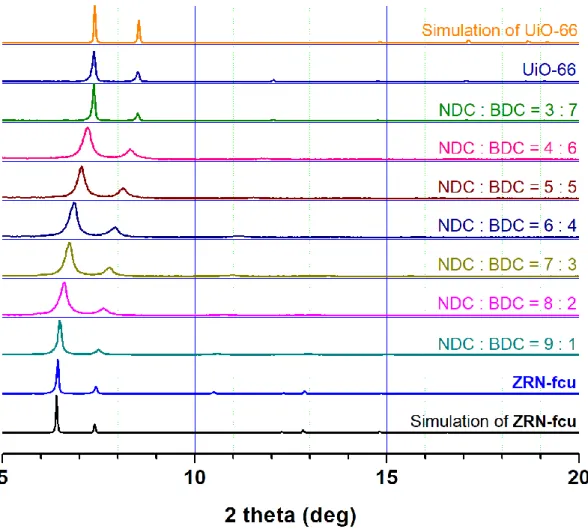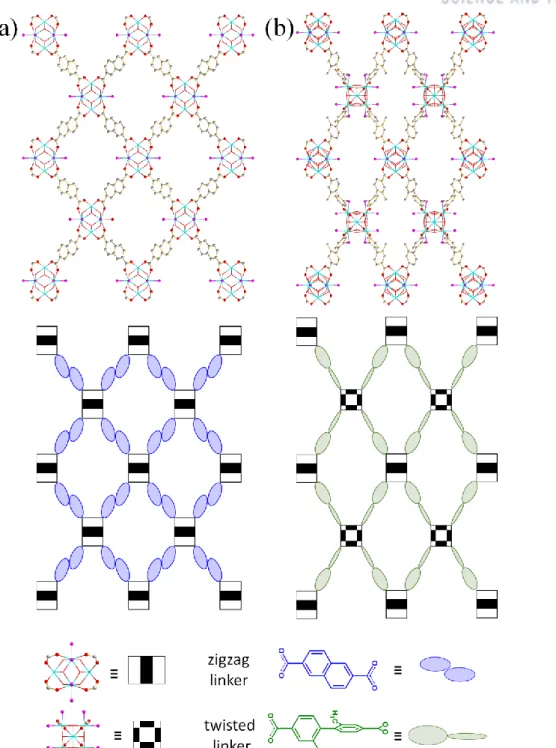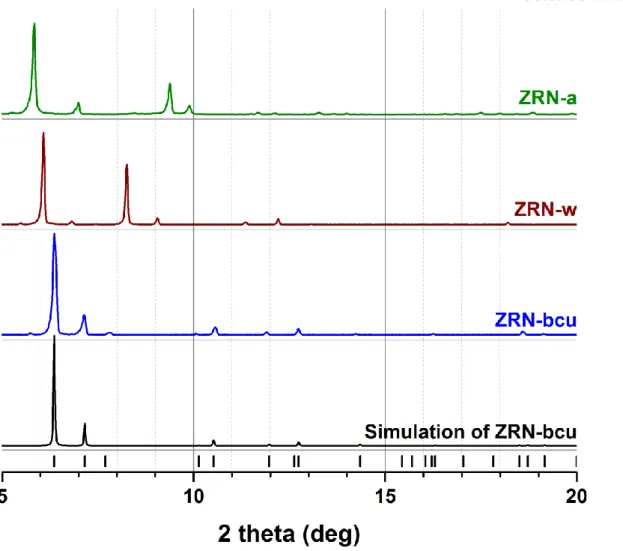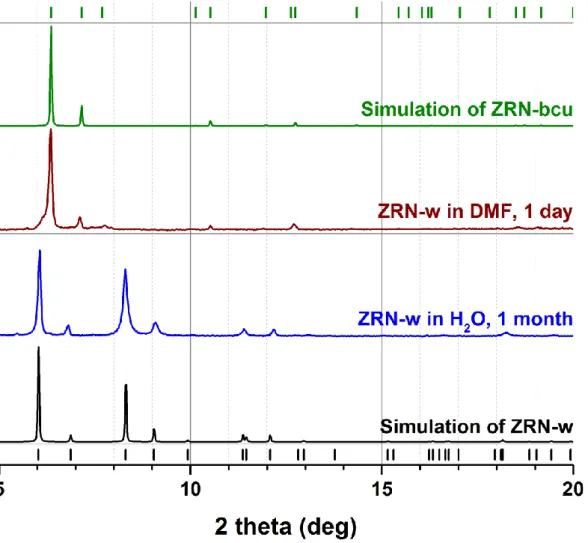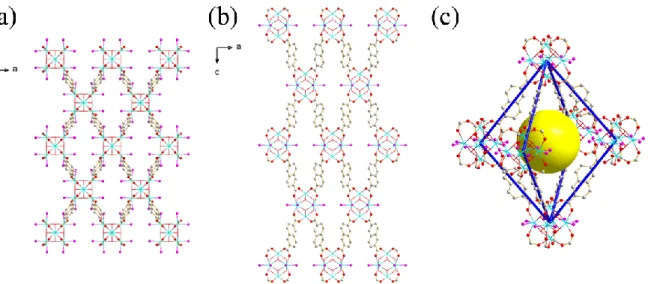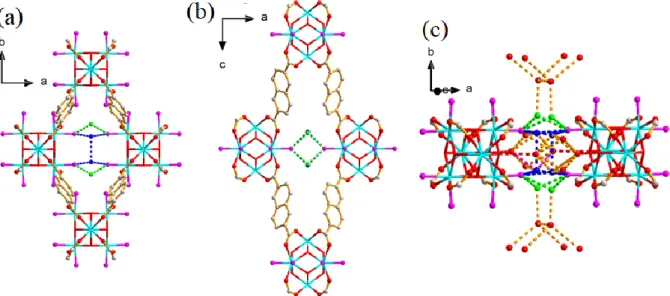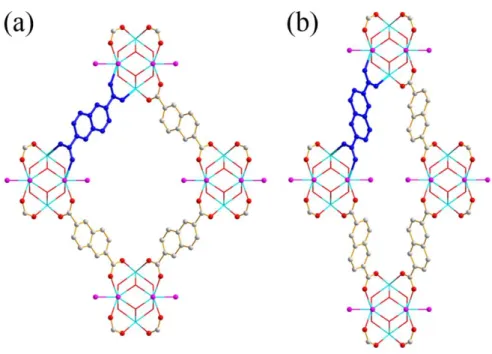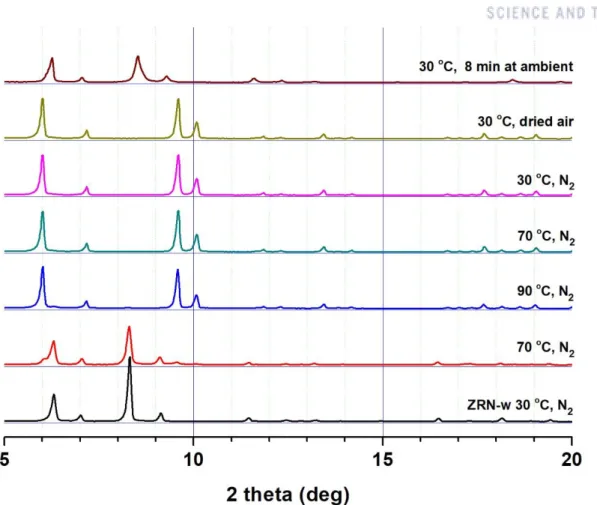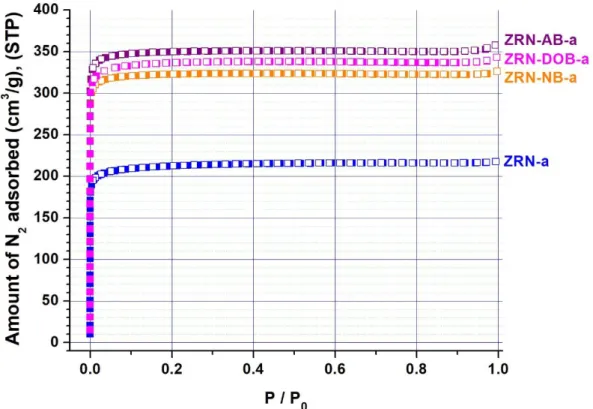This one-pot synthesis is difficult to locate organic ligands in specific positions, leading to hybrid MOFs with random distribution of the ligands in the frameworks. Many researchers have therefore tried to position ligands with specific functional groups in predetermined places in the framework. Hollow structures with cavities in the center of the particles are of great interest because of their fascinating properties such as low density, high surface-to-volume ratio, low coefficient of thermal expansion and high loading capacity.
Several hollow MOF structures have been prepared using synthetic strategies similar to those used to prepare hollow metal/metal oxide nano-/microstructures. These results indicate that symmetry matching between inserted ligands and potential binding sites plays a key role in the postsynthetic processes of ligand insertion. The second part of the thesis deals with the synthesis of single-crystal hollow MOFs with cavity dimensions of several micrometers and hundreds of micrometers using a sacrificial hard template strategy.
When a methanol solution of a neutral ditopic ligand is added directly to MOP crystals, the reaction between the MOP crystals and the linkers occurs on the outer surface of the MOP crystals. The difference between the bond diffusion rate in the MOP crystals and the diffusion rate of the MOP building units makes the hollow superstructure.
General Introduction
Hollow superstructure of MOFs
Positioning heterolinkers with different types and lengths into specific sites of Zr-MOFs with
- Experimental Section
- Results and Discussion
- Conclusion
- References
The space inside the tile is highlighted with a yellow virtual sphere. d) Two different binding modes of tfa anions to Zr sites, one is bound to Zr sites via an intra-cluster bridging mode and the other is bound via an inter-cluster bridging mode. PXRD patterns of ZRN-bcu, ZRN-w, ZRN-a crystals, synthesized ZRN-XB crystals and corresponding crystals exposed at room conditions. ZRN-DOB ball diagrams. a) Two statistically disordered DOBDC2− in two different modes of interaction (black and green) with the framework.
A statistically disordered DOBDC2- (black) is interacting with the framework using both hydrogen bonding and π-π stacking interactions. Ball-and-stick diagram of DOBDC interacting with the framework by the combination of hydrogen bonds and π–π stacking interactions. The diagrams in (a), (c) and (e) show the connection and mode of connection of the BDC derivatives along the plane.
Diagrams in (b), (d) and (f) show the bonding mode of the BDC derivatives between the nearest neighboring Zr-clusters. Statistically disordered parts of BDC derivatives and nitro and amino residues of BDC derivatives are omitted for clarity.
Preparation of single crystalline hollow Cu-MOFs via a sacrificial template strategy
Experimental Section
3-micro crystals were synthesized using the same procedure used to prepare 1-micro crystals. The PXRD patterns of MOP-micro and MOP-macro crystals were identical, although the crystals were prepared with slightly different reaction conditions (Figure 3.1). Ball-and-stick diagrams of a cuboctahedral MOP in views showing (a) a triangular window and (b) a square window, respectively.
Packing views highlighting (a) cubic close packing and (b) face-centered cubic lattice arrangement of the MOPs, respectively. The acidic DCI solution led to the dissociation of the MOP and the release of the free hip ligand. The PXRD patterns of the crystalline MOP macro sample under ambient conditions show that it loses its crystallinity within 14 minutes (Figure 3.5).
Addition of a small amount of DMF to the amorphous MOP-macro sample restores the crystallinity of the sample. PXRD patterns of the as-synthesized macro-crystalline MOP sample in ambient condition and restoration of its crystallinity by solvent addition. When a 1-macro-hour crystal produced from a MOP-macro crystal in a MeOH solution of dabco was fragmented, the inner surface of the hollow crystal was exposed in the fragments (Figure 3.7a and b).
In addition, a reactive interface is generated between the shell of the crystalline MOF and the core of the crystalline MOP. The shell of the hollow 3-micro-h is not an aggregate of smaller crystalline particles, but is a single crystalline particle. The hollow nature of the micro-h crystals was confirmed using a focused ion beam scanning electron microscope (FIB-SEM) (Figures 3.14 and 3.15).
The total volume of the 3 microh product is much larger than that of the starting MOP microreactant (Figure 3.17). -SEM images of (c) the MOP- micro crystal cut using FIB milling and (d) the 3-micro-h crystal cut using FIB milling after carbon coating. The volumes of MOP micro-, 3-micro, and 3-micro-h crystals. a) The volume of MOP micro-crystals, (b) the volume of the 3-micro-crystals obtained from the MOP micro-crystals, and (c) the corresponding volume of the 3-micro-h crystals obtained from the same amount of the MOP microcrystals.
The microporosity of the crystalline MOF shell results in a difference in the diffusion rates of the ditopic linkers and the MOP building units. The dimensions of the hollow MOFs can be controlled by the dimensions of the sacrificial MOP single crystals.
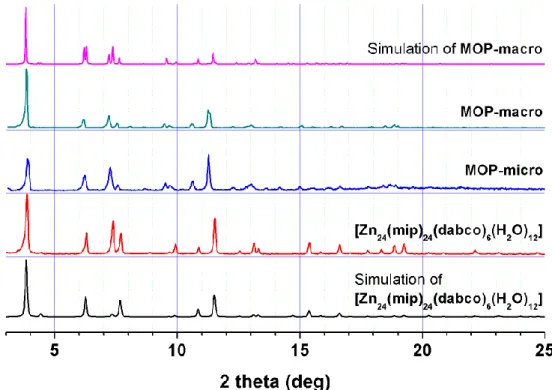
Results and Discussion
Conclusion
In summary, single-crystalline hollow MOF structures were obtained by using a MOP single crystal as a hard sacrificial template. The formation of the microporous MOF shell in the hollow MOF occurs via the diffusion of the cuboctahedral Cu-MOP building units at the surface of the template MOP single crystal outward into the MeOH solution containing the linker. While cuboctahedral Cu-MOP building units larger than the pore dimensions of the microporous MOF shell could not diffuse out through the micropores of the MOF shell from the sacrificial MOP single crystal, linkers smaller than the pore dimension could diffuse inward through the micropores of The MOF must to the cuboctahedral Cu-MOP building unit, leading to the formation of the crystalline hollow MOFs.
Not only hollow MOFs of the order of hundred micrometer dimensions, but also those of the order of micrometer dimensions could be obtained.
